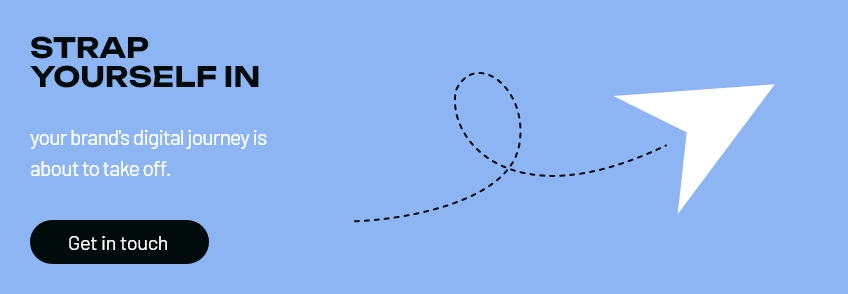Sometimes it feels like the world is getting smaller by the day. Retail giants such as Amazon and eBay have broken down the barriers for B2C businesses working across multiple territories, and now it’s the norm for consumers to be shopping online from anywhere in the world. The trend of increasing globalisation of our markets is here to stay, with fulfillment logistics becoming even easier and consumers becoming more confident with buying from abroad. So if you’re operating in just a single territory right now, how do you look to expand your digital presence to new markets?
PPC may be the answer.
PPC enables your business to be almost-instantly visible in any market that you choose through appearing in that country’s version of Google. However, the amount that you appear and how well that resonates with customers to drive sales will depend upon how well your campaigns are set up. We’ve kept things simple here with our 3 steps to launching into new markets.
1: Research, Research and Research some more
Know your Search Engines
Before starting any form of research, you need to be aware of what the prevalent search engine is in that country.
Google Ads is the number one paid ad platform for most countries, and on the whole this is pretty simple. However, there are some notable exceptions, including:
- Russia (Yandex)
- China (Baidu)
- Japan (Yahoo)
- Korea (Naver)
- Taiwan (Bing Ads/Yahoo)
In most of these countries, Google Ads does have a presence, but in countries such as Russia and China, local search engines really are a must if you want to make any kind of impact.
In China, Baidu boasts 76% market share, while in Russia, Yandex sees about 52%. These ad platforms have different targeting options, sophistication and reach, so it’s important to fully understand them before beginning.
More than just Language – Intent and Localisation
Apart from target country market research, identify whether there is a demand for the products/services you offer in that country:
- Search for variations of keywords in the SERPs
- Use a variety of keyword research tools
- Note your competitors (they almost certainly won’t be the same as your current market)
- Gauge differences in price points, discounts and the way competitors in the prospective territory market their products or services
- Check the messaging used – are websites pushing USPs over prices
Both ad copy and keyword translations will form the backbone of your new activity. It’s easy for messages to get confused during the translation stage so it goes without saying you can’t do this through an online translator. Ensure you use an expert who is a native speaker for that market, as well as that language. We use idioms when we speak and create copy more often than we think, which means that our good intentions can be lost when the copy is word-for-word translated to a new language. Users can tell the difference between someone who knows the market and speaks like a local to someone who just happens to know the language as we use different terminology and colloquialisms – whilst a small detail to us, it can help build additional trust in the site and the ads.
Also note that in different regions, different holidays will be celebrated and impact upon customer behaviour, and you don’t have to go far to see that impact. For example, Ireland and Scotland have different Bank Holidays to England and Wales, Poland begins Christmas celebrations on the 6th December (St Nicholas’ Day) and their most important festive day is the 24th. Knowing these differences will enable you to plan for different peaks throughout the year, and make sure you’re not causing offence to the local market without realising!
Extra Costs
There are also some additional, hidden costs when it comes to launching abroad. It’s not as simple as switching on PPC and waiting for the money to roll in so make sure you factor the following into your forecasts:
Shipping costs – These can vary wildly and can sometimes be hugely prohibitive. It’s important to understand what domestic competition is charging on shipping and their total price point versus yours to understand if you can still remain price competitive in spite of these. Many global shipping companies will negotiate better rates if you’re launching into more than one market or hitting certain shipping volume targets early on so consider the pace that you scale as you understand how these costs can impact your conversion rates with customers.
Import/export regulations – This can be a tricky, complex beast depending on the target country and product in question. As the UK faces new regulations in 2021 when Brexit rules come into effect, there will be even more complexity on how this will work for UK based businesses to consider.
Customs/tax – This varies from country to country but import taxes can be sizable (circa 20-30%). It’s important to make decisions on if you’ll be passing this cost onto consumers or taking the hit directly to your profitability as you understand how you’ll trade in these new markets.
New Digital Taxes – From November 2020, many advertisers (including Google) have decided to pass on the cost of a new digital tax directly to advertisers. The Digital Services Tax currently impacts businesses trading in the UK (2%), Austria (5%) and Turkey (5%). These taxes will be added on top of the budget you are putting into your advertising accounts so take note that your costs will be between 2% and 5% higher depending on the markets you’re launching into. It’s important to keep an eye on future announcements surrounding these new digital service taxes as it’s likely we’ll see other countries facing similar regulations soon.

2: Build Trust Signals
It’s pointless being visible and paying for traffic if you won’t be able to convert it; whilst you might not be a household name in international markets yet, there are two key areas to get in place before you’re ready to launch.
Ad to Landing Page Consistency
It can feel easier to just translate your ad copy and create attention grabbing PPC ads or display creative, without investing the time and effort into translating your entire site or the key landing pages. Whilst it’s more time consuming to turn whole pages into another language, it’s essential for maximising your chance to convert new users.
Credentials
Credentials and trust signals are going to be crucial in breaking into a new market, especially one overseas. Implementing on-site credentials, such as Google Trusted Stores, reviews and security protocols is a good place to start. Take a look at the review sites that in-market competitors are visible on to understand which platforms are dominant in that market and start to collect reviews from existing customers there. Without an established brand name, building this trust will be vital in delivering any kind of conversion rate.
No consumer is going to trust a brand they’ve never heard of, pay increased shipping costs and wait for a delivery from a company on the other side of the world.
3: Scale your Visibility
With the preparation in place, it’s time to switch on your campaigns. To do this, having the right structures in place will be key to initial success and to collecting accurate, granular performance data which you can use to optimise accounts.
Perfect Account Structures
You could argue there is no such thing as a “perfect” account structure, because every account setup has slightly different needs and requirements to meet. There are a few ways to go about setting up your account, from following the structure of your website to splitting by products and services, but there are a few things you will need to do regardless of how you choose to set the foundations up:
- Set up individual accounts for each country – this keeps them separate for easier reporting and allows you to drill into the individual markets in much greater detail
- Make sure the time zone is set to the right location – you don’t want to be serving ads when the local audience is fast asleep
- Don’t forget to update your currencies – this helps both with reporting and budget management. You don’t want to be caught out by surprise overspends because you’ve forecasted in one currency and spent in another.
- Set a bid strategy that matches your goals in the new market – as you’re breaking into the market, you likely want to generate brand awareness and set bids based on impressions or clicks, but as you solidify your presence you can move more towards conversion-based strategies.
Google Shopping
Google just made it a whole lot easier to reach your international customers. It’s been possible to use shopping campaigns to reach customers in additional markets using a single shopping feed for a while now but until recently this was only available for a limited selection of markets determined by Google based on the language of your feed.
With the recent update to Google Merchant Center, the restrictions on which countries you can target with Shopping campaigns have been lifted and now you can reach customers searching for your products in any market that Shopping is active in whose browser is set to the same language as your feed.
To set up:
1. Add the shipping pricing & details for each new market into the feed
2. Google have a currency conversion tool so you don’t need to update the prices in the feed or on site to local currency – Google will automatically convert your price to the local currency and display both your selling price and the converted price in the shopping ad, shown in the screenshot below. More details of this can be found here: https://support.google.com/merchants/answer/7055540

3. Add the new markets you want to target as additional countries in the feed settings in Google Merchant Center.
With campaigns set up, it’s time to understand how to best set your bids and control account performance. As you’re now running Google Shopping in multiple markets, automation will be key to freeing up your time and keeping the entire account performing efficiently. To do this, we’d recommend launching with smart shopping in place. Smart Shopping aims to maximise your revenue as it works directly to a ROAS target or budget, which means you can reach new customers but at minimal risk. If you’re a pro with Smart Shopping already you might normally segment campaigns by product category or margin, for launching internationally we’d recommend setting one campaign up with all products that way the algorithm’s can work dynamically to drive the best performance and help you to understand which products work best in new markets.
For your initial launch start with a low budget and set the campaign to use maximise conversion value as the bid strategy. This will help you to drive performance from the start and understand what it takes to reach customers in this market. Once performance is working, change the campaigns to focus on a ROAS target then gradually scale the budget to capture more demand at that ROAS level.
Setting up international campaigns and going after new territories have never been as streamlined as it is now, but to really nail it you need to make sure your research is thorough, from demand through to audience through to competitor analysis on both a domestic and international level. The growing demand for people to be able to purchase whatever they want, from wherever they are, opens up worlds of opportunity for brands, as long as it is done correctly and you can comfortably serve your customers, and prospective customers, to the standard they’d expect from a local company.

Need help launching into an international market or assessing the opportunity that’s out there for you? Discover more about how Found’s international digital marketing services can grow your business, or get in touch with our team.


